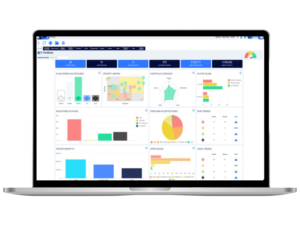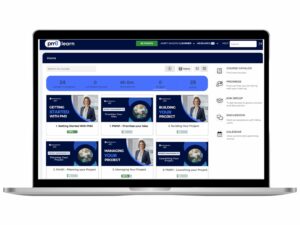Modern organisations are under increasing pressure to deliver projects on time, within tighter budgetary constraints, and in alignment with strategic objectives. Project Portfolio Management tools have become indispensable in helping organisations prioritise, plan, and execute projects efficiently. However, with a large variety of options available, choosing the perfect PPM tool for you, your business and its specific needs, can be a daunting task.
This article will guide you through the key factors to consider when selecting a PPM tool that best fits your organisation, providing information to assist you in making an informed decision that delivers value, a strong ROI and drives long-term success.
Before exploring PPM tools, it is crucial to assess your organisation’s specific requirements. Start by asking the following questions:
Understanding these needs will help you create a checklist of must-have features and ensure you select a tool that aligns with your strategic goals.
A PPM tool is only as effective as its adoption rate among employees. If the software is complex or unintuitive, teams will resist using it, leading to inefficiencies and limited return on investment.
Look for a tool that offers:
A tool that balances robust functionality with usability ensures that all stakeholders can leverage its features effectively. In combination with integrations to internal communication platforms such as MS Teams, the benefits of effective PPM can be socialised across the business.
A high-quality PPM tool should provide end-to-end visibility into your organisation’s project portfolio. This includes:
A strong reporting framework is particularly essential, as it enables leadership teams to make informed decisions based on real-time insights.

Financial oversight is a critical component of effective project portfolio management. Your chosen PPM tool should provide:
As organisations grow and evolve, their PPM tool should be able to adapt. Consider the following:
Choosing a scalable and well-integrated tool will future-proof your investment and support long-term business growth.
With growing cybersecurity threats, it is essential to choose a PPM tool that prioritises data security. Key considerations include:
Ensuring strong security protocols will help safeguard your organisation’s data and maintain regulatory compliance.
Even the most intuitive PPM tool requires adequate support and training to maximise its value. Look for vendors that provide:

Having a responsive vendor with excellent support services can significantly impact the long-term success of your PPM implementation. Comprehensive onboarding and training programs ensure smooth implementation and user adoption. Having access to self-paced learning modules, structured training sessions, and an extensive knowledge base, helps teams to maximise their use of a PPM solution, ensuring long-term success.
Cost is always a factor when selecting a PPM tool, but it’s important to evaluate more than just the upfront licensing fees. Consider:
A thorough TCO analysis ensures you choose a solution that offers the best value for your investment. Look for commercial guidelines that are transparent with all expected costs, both immediate and additional to support the potential requirement growth.
Selecting the right Project Portfolio Management tool is a strategic decision that can significantly enhance project delivery and organisational performance. By focusing on functionality, usability, security, and scalability, you can ensure that the chosen solution meets your current needs while remaining adaptable for future growth.
Investing time in research, testing, and stakeholder engagement will help you find the perfect PPM tool—one that not only optimises project management but also drives wider business success and achieving strategic objectives in the long run.

Our products help you deliver successful change programmes and projects by always focusing on the overall business outcomes. Find out how our products can help you.
Contact Watch a DemoThe majority of PMOs that are, what we call ‘value-adding’ PMOs, will need to produce dashboards...
Read more >Choosing a PPM Tool can be a fraught and challenging process. Getting it right requires forethought,...
Read more >